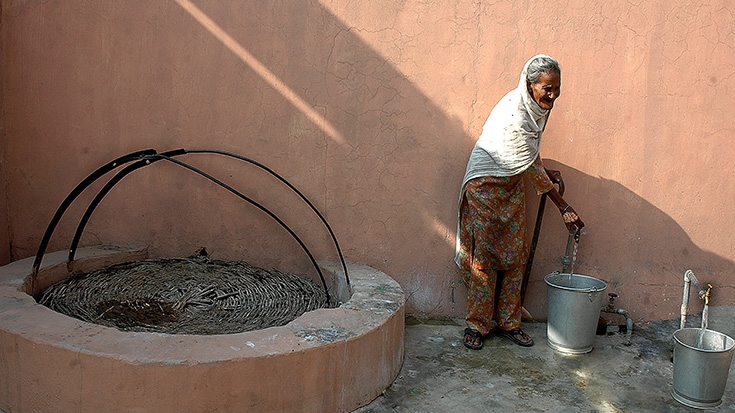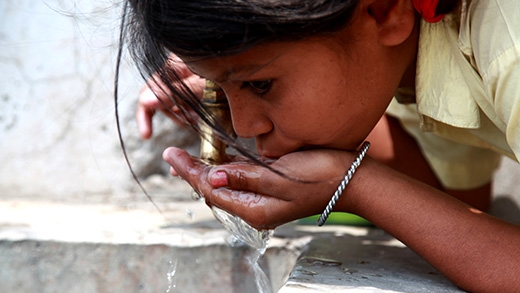By January 2014, households in 100 villages had installed water meters, helping reduce the amount of water wasted. And, over 40 villages received round-the-clock water supply, something that few urban areas in India have been able to do so far.
Challenge
Even though a number of rivers flow through Punjab’s fertile heartland, the ground water table was falling and many villages faced acute shortages of drinking water. Most families fetched water from shallow wells and hand pumps that often ran dry in summer, and water-borne infections were common. Alarmingly, the water in some places was contaminated with arsenic and fluoride and, in six districts, the presence of heavy metals such as uranium was reported. Since this was the first time that Punjab was adopting a community managed, demand-led project, the commitment of the state’s political leadership and senior bureaucracy was critical. Moreover, to deliver high quality services sustainably, a small section of villagers needed to be convinced to shift to metered connections with volumetric tariffs that charged consumers on the basis of water actually consumed. This also allowed the poor, who consume less water, to pay less than the normal flat rate. Furthermore, while the project called for the active participation of communities, the state had few NGOs that could help create strong community institutions and build the capacity to deliver services.


